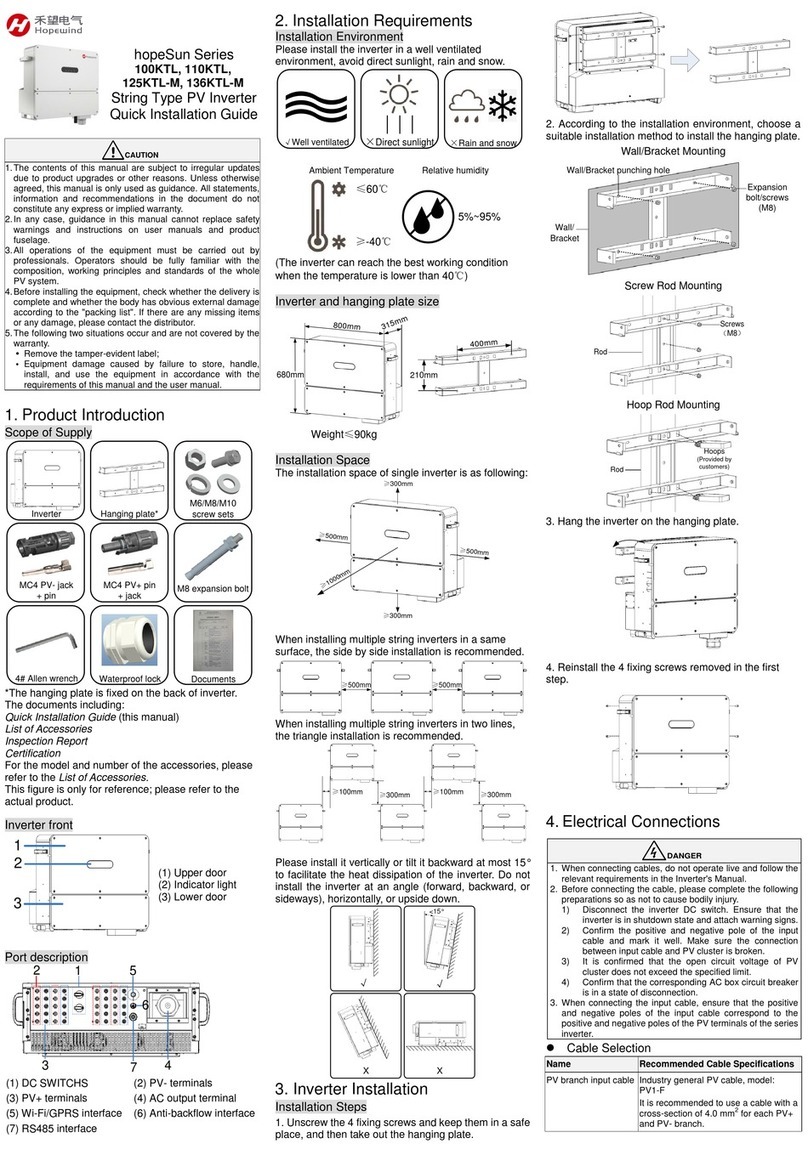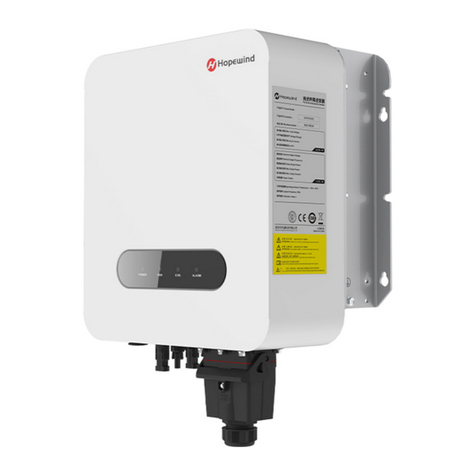
Content
About this manual·················································································· 5
Content·································································································7
1 Safety Precautions··············································································· 1
1.1 Transportation·······················································································1
1.2 Storage ·······························································································1
1.3 Installation····························································································2
1.4 Operation·····························································································2
1.5 Maintenance·························································································3
2 Product Description············································································· 5
2.1 Product Description················································································5
2.1.1 Schematic Diagram··············································································5
2.1.2 Operation Mode···················································································5
2.2 System Configuration and Application·························································6
2.2.1 Application Description··········································································6
2.2.2 Supported Grid Form············································································ 7
2.3 Naming Rules·······················································································7
2.4 Nameplate label ····················································································8
2.5 Machine Configuration············································································9
2.6 Signs and labels·················································································· 11
2.7 Warning Labels in Inverter ····································································· 11
2.8 Technical Data ····················································································12
2.9 Mechanical Parameters·········································································13
2.10 Environment Requirements ··································································13
3 System installation ·············································································15
3.1 Unpacking and inspection······································································15
3.2 Preparation of installation tools ·······························································15
3.3 Installation environment requirements ······················································15
3.4 Requirements for reserved space····························································16
3.5 Fixing method·····················································································17
3.5.1 Pole-mounted (hoop) installation··························································· 17
3.5.2 Pole-mounted (screw) installation·························································· 18
3.5.3 Wall-mounted installation····································································· 19
3.6 Electrical connection·············································································20
3.6.1 Cable requirements············································································ 20
3.6.2 Recommended cable specifications······················································· 20
3.6.3 Torque requirements··········································································· 21
3.6.4 Preparation before operation································································ 21
3.6.5 Connect the PE cable ········································································· 22
3.6.6 Connect the AC output cable································································ 22
3.6.7 Connect the communication cable························································· 23
3.6.8 Connecting DC input cables·································································23
4 Commissioning Guide·········································································25
4.1 Check before starting············································································25
4.2 Power on the system············································································26
4.3 Power off the system············································································26
5 Maintenance and troubleshooting ························································27
5.1 Maintenance items and cycle··································································27
5.2 Troubleshooting···················································································28
6 Inverter handling instructions······························································33
6.1 Disassembly of the inverter····································································33
6.2 Replacing the inverter···········································································33
6.3 Packaging the inverter ··········································································33































